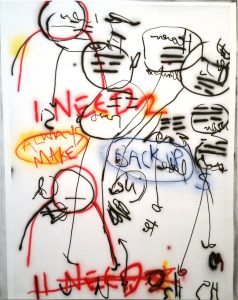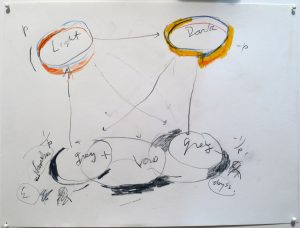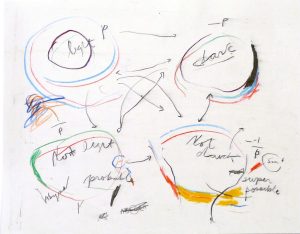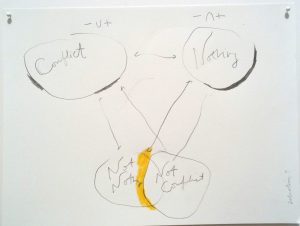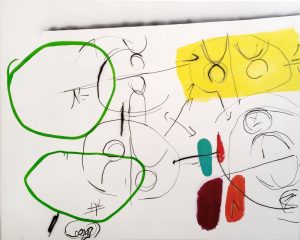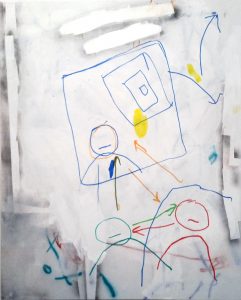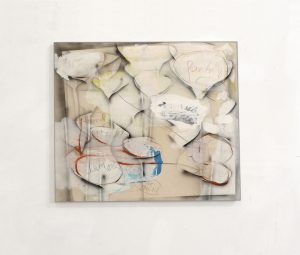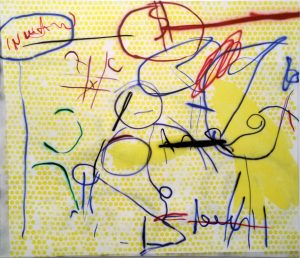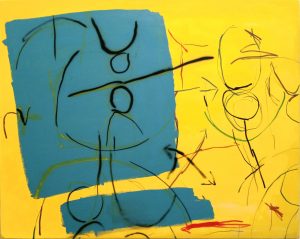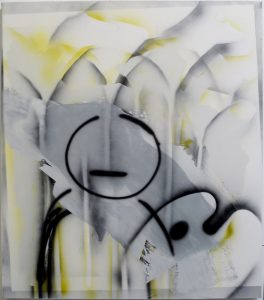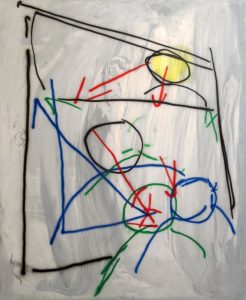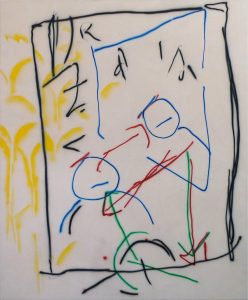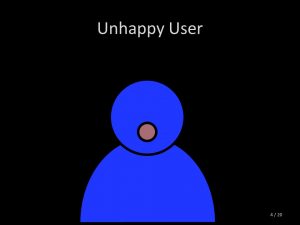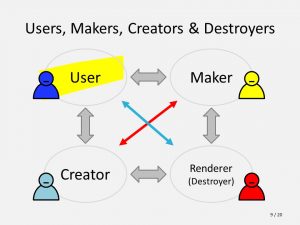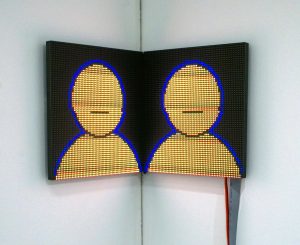I’ve spent twenty years working in the tech and business world and it’s affected my studio a lot. This might be no accident because in general I think in terms of systems (logical, enterprise, Gnostic, religious, code, diagrams). As a technical professional, developer and manager, I aim to create scalable and so-called fault-tolerant systems or websites that work within the parameters, and compromises, of whatever requirements the business has. As an artist, I gravitate to logical knots, randomness and system glitches because I think they reveal not just the cracks in the seamlessness that technology aspires to, but reveal the all too humanness of everything that goes into technology, in all its forms, including painting. Business and technology are completely success-driven and the proof of that success is a happy user, at least in terms of software. Art’s greatest feat, I think is the expression of failure to achieve impossible aspirations. Because the kind of tech that has blossomed in the past few decades and so interleaved with our daily lives, I think we have come to the point where we are at best unhappy users of art. Of course, like any software developer and in a world of tension between painting and programming, the artist is as much an unhappy user as everyone else.
After making work that tried to express how much randomness is a central juncture in the crossroads of life, art and technology, and is in fact central to the very production of all things digital, I am now looking at how to use the language of technology, as well as using technology itself, to express the conflicts in thought and seeing that are being heightened in the new screen-laden world. Before, I looked for the best source of randomness, which turned out to be radioactive decay, to generate the streams of random numbers that digital art consumes. In that work, randomness from ambient and local radiation seems the closest thing we get to some kind of “tangible” unknowable absolute. Recently, I have been tapping into two things that at first might seem disconnected – the now ubiquitous white-board or “dry-erase” drawings used to conceptualize code, systems and process, and the equally ubiquitous LED matrix boards used in bodega signs, Halal trucks that are like folk-versions of massive signage boards. Those signs, with their tangible tech-physicality are often bursting with the lowest kinds of attention-seeking animation and can produce a kind of distracted state that holds the eye in spite of the mind. That condition is a great place to play with conflict – especially one between what the eye sees and the mind tries to parse – something that also makes for good painting. What else can art express but conflict – it can’t really offer solutions or action, but it can articulate it. The whiteboard is my model for drawing. The paintings that result are like the preparations for coding, diagrams of drawing and conceptualizations of user’s behavior, or sketches of a psychological algorithm for unhappy users adrift in a sea of broken code. They look like painting, but are more like diagrams for how art works. In the recent LED-video I’ve been making, I try to create an opposite state akin to the Stroop test, sometimes even using the very form of the Stroop test itself. The pieces use a kind of animation and movement that holds the user but also, I hope, reminds us that to seek new information from the screen, like the hope invested in technology to reveal more and more, is little like an exercise in futility that is as inevitable as it is human.
